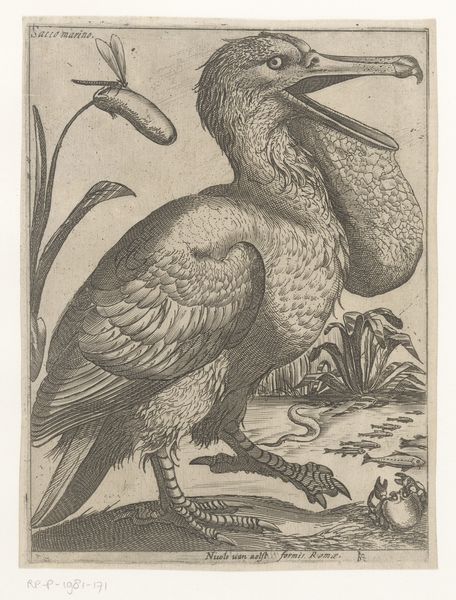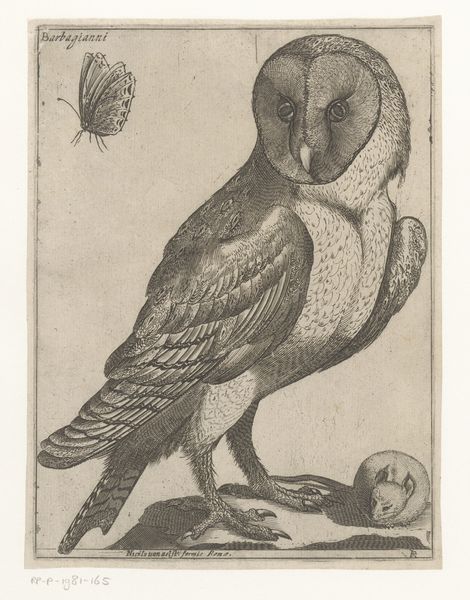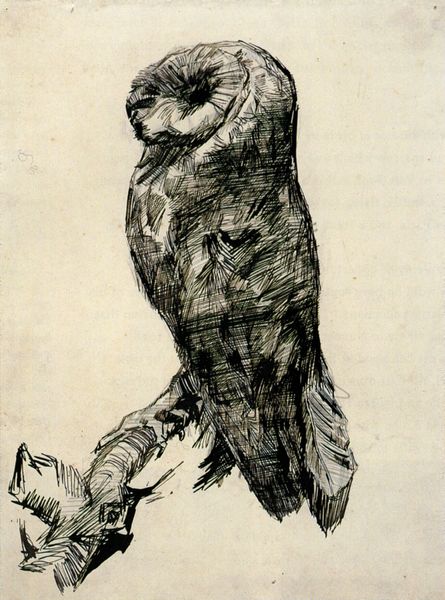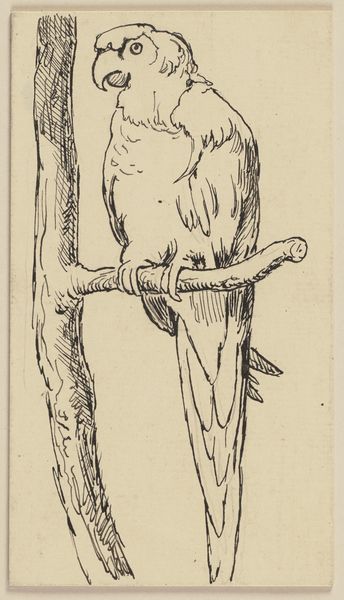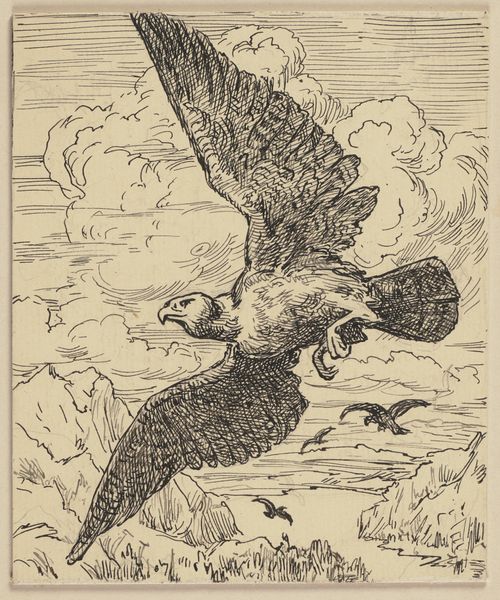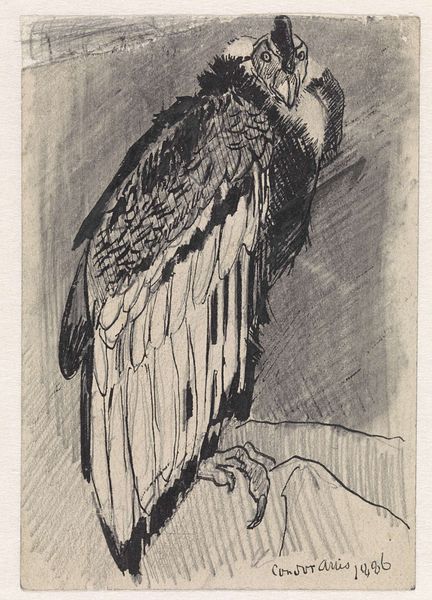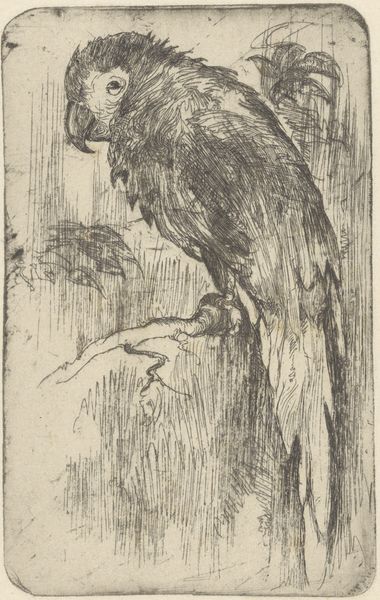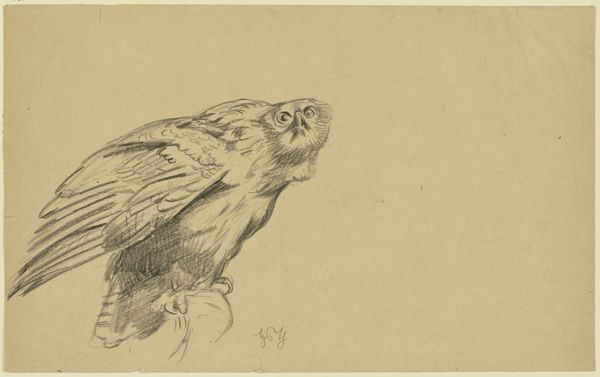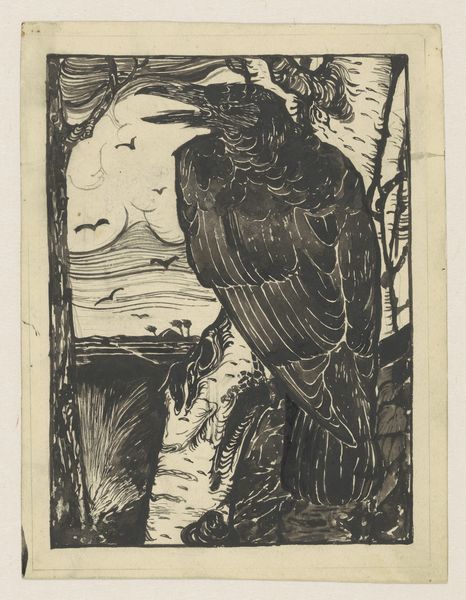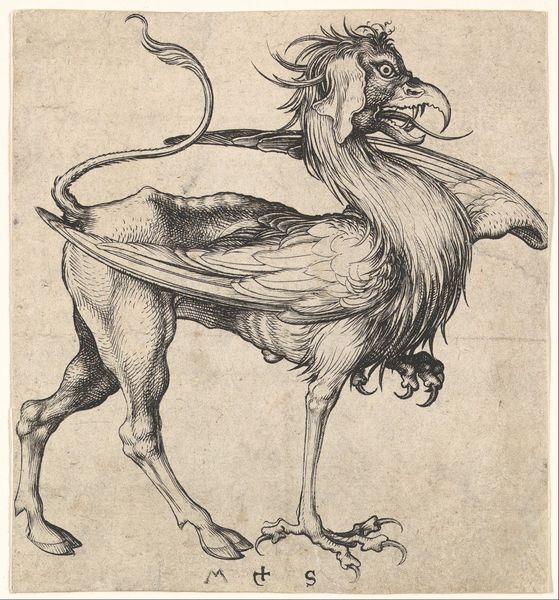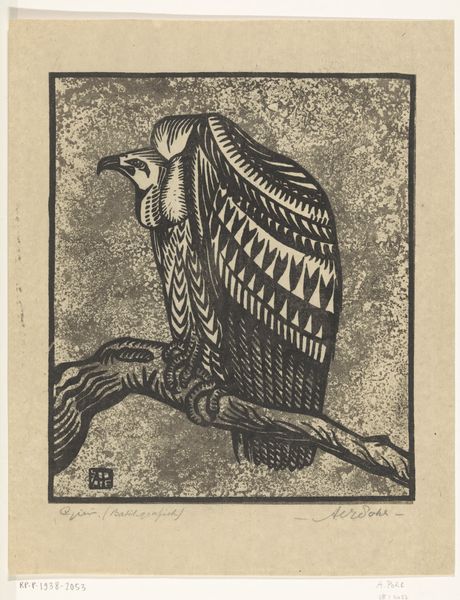
drawing, ink, indian-ink, pen
#
portrait
#
17_20th-century
#
drawing
#
ink drawing
#
animal
#
pen illustration
#
pen sketch
#
cartoon sketch
#
personal sketchbook
#
ink
#
german
#
ink drawing experimentation
#
indian-ink
#
pen-ink sketch
#
line
#
pen work
#
sketchbook drawing
#
pen
#
sketchbook art
#
realism
Copyright: Public Domain
Editor: Here we have "Drawing for the primer_ Eagle," created around 1905 by Hans Thoma. It's an ink drawing with a striking depiction of an eagle. The sharp lines and intense gaze give it a powerful, almost intimidating presence. What strikes you about this work? Curator: The eagle, of course, is heavy with symbolic weight, particularly in the context of early 20th-century German nationalism. Thoma, working during a period of intense cultural and political transformation, uses this powerful animal. We have to ask: Is he commenting on or complicit with the era's imperial ambitions? The precision of the ink work lends an air of authority to the image, but doesn’t its presentation almost invite a critical gaze? Editor: So, the context gives it layers of complexity. But could it just be about appreciating the bird's beauty? Curator: It’s not that simple, I'm afraid. Looking at the visual language of power so carefully rendered here, we should ask ourselves about the legacy of such symbols. What do we do with images that carry histories of domination? Can we reclaim or reinterpret them? The choice of the eagle, rendered with such deliberateness, feels far from neutral. Editor: That's a compelling point. The skill almost amplifies the uncomfortable association. Are we then responsible for interrogating the context and symbolism, no matter how beautiful the image is? Curator: Exactly! Recognizing that visual pleasure doesn't negate ethical considerations is crucial. Engaging with art is more than just passive consumption; it’s about active dialogue and critical engagement. Editor: This makes me rethink how I approach even seemingly straightforward artworks. Curator: Precisely. By interrogating these images and their place in broader narratives, we become more critical viewers.
Comments
No comments
Be the first to comment and join the conversation on the ultimate creative platform.
